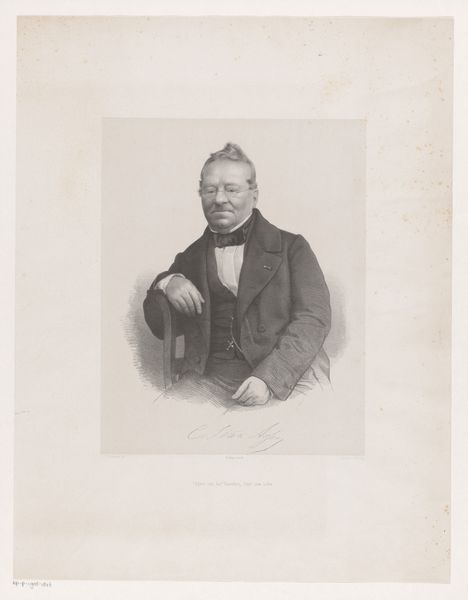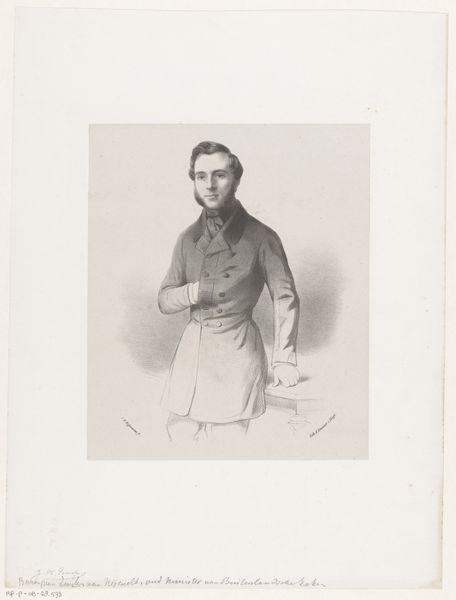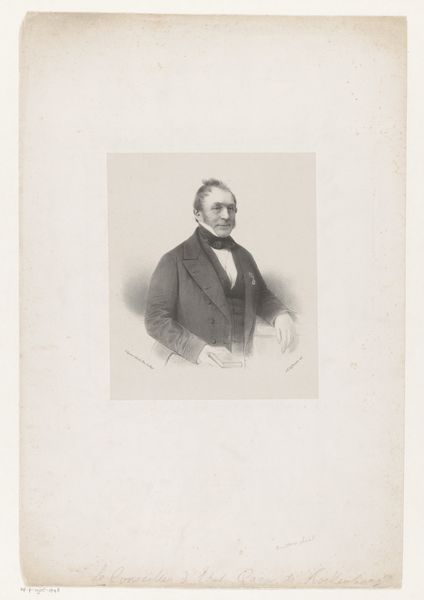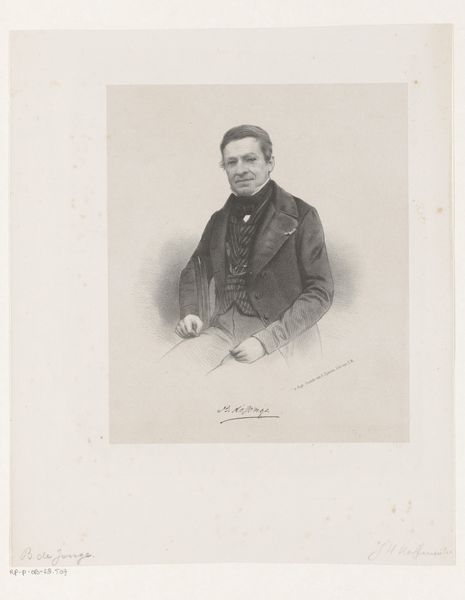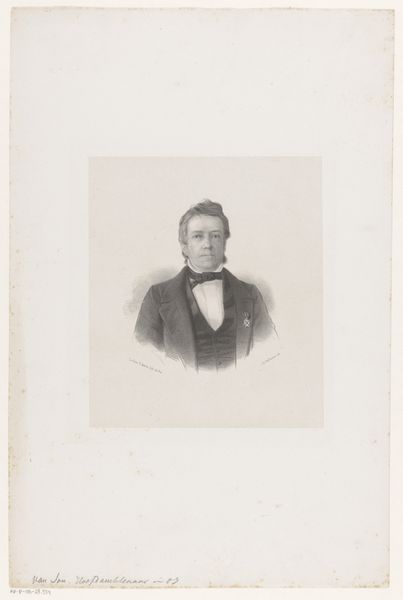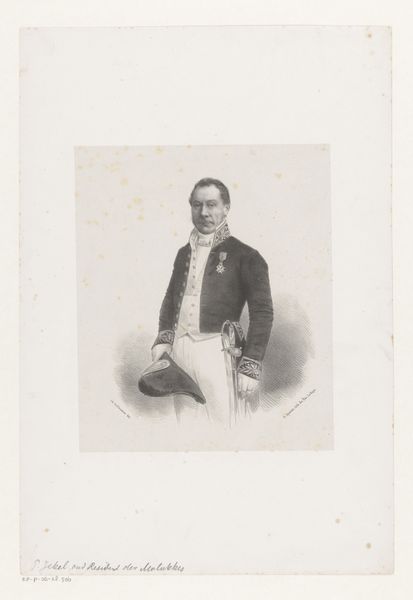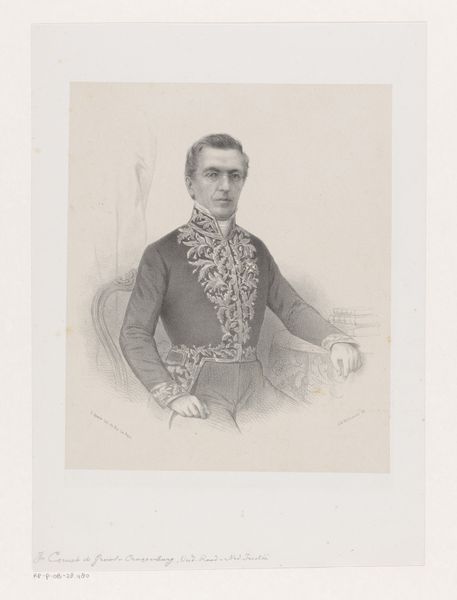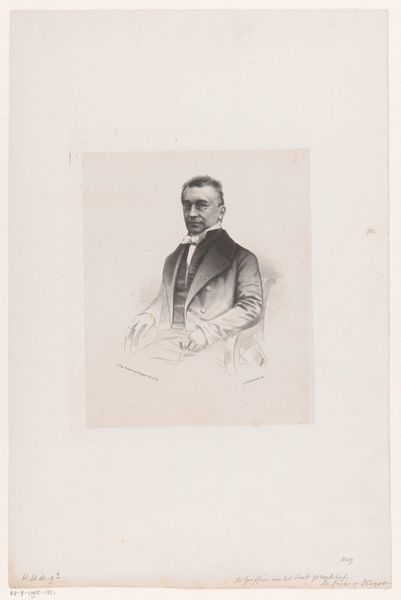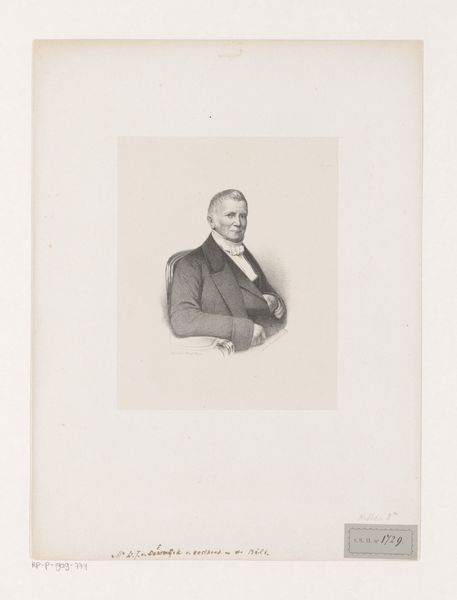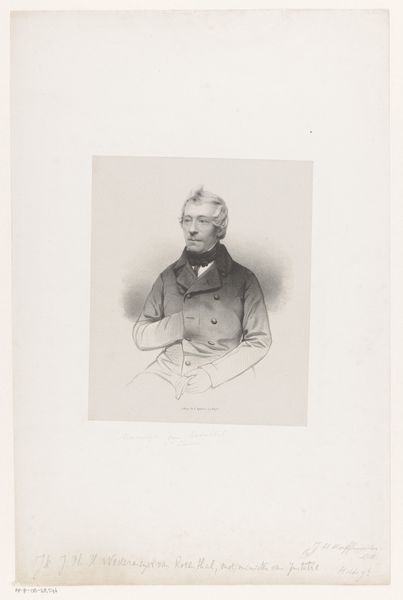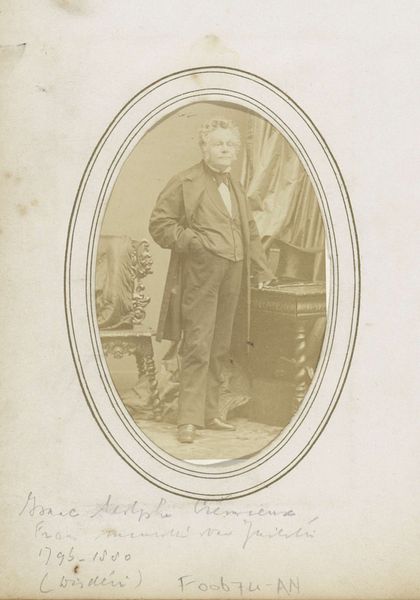
Portret van Louis Libert Guillaume Marie de Villers de Pité c. 1851 - 1883
0:00
0:00
drawing, print, pencil, engraving
#
portrait
#
drawing
# print
#
charcoal drawing
#
portrait reference
#
pencil drawing
#
pencil
#
engraving
#
realism
Dimensions: height 520 mm, width 358 mm
Copyright: Rijks Museum: Open Domain
This is Johan Hendrik Hoffmeister's portrait of Louis Libert Guillaume Marie de Villers de Pité, made using lithography. Lithography, unlike painting or sculpture, is inherently collaborative. The artist draws on a stone or metal plate, which is then chemically treated by a skilled printer, who then coaxes an image from the matrix by using a press. The velvety blacks and subtle gradations of tone, seen here, are a testament to the printer's skill. The proliferation of printed imagery in the 19th century was closely tied to industrialization, capitalism, and a growing middle class eager to consume images of itself. While de Villers de Pité, a military man, may have been an aristocrat, the very act of reproducing his likeness democratized his image, making it available to a wider public. Hoffmeister's print thus represents the intersection of artistic skill, technological innovation, and shifting social hierarchies. It reminds us that even seemingly straightforward portraits can be deeply embedded in the material and economic realities of their time.
Comments
No comments
Be the first to comment and join the conversation on the ultimate creative platform.
